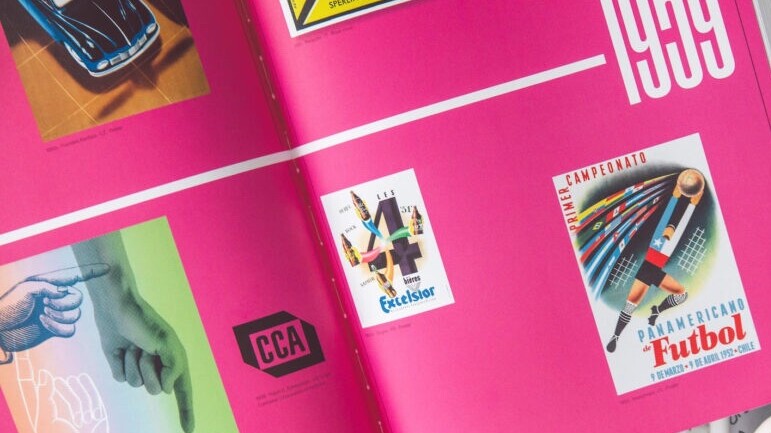- Home
- Collective
- In-House UI/UX Design vs. Hiring an Agency
In-House UI/UX Design vs. Hiring an Agency
The decision between an in-house UI/UX design team and hiring an agency does not have a one-size-fits-all answer. It depends on various factors, including project complexity, budget constraints, strategic goals, and the need for innovation. Companies may find that a hybrid approach, leveraging both in-house resources for ongoing product development and agencies for specialized projects or fresh insights, offers the best balance to meet their UI/UX design needs. Ultimately, the choice should align with the company’s vision, user needs, and long-term growth strategy, ensuring that the UI/UX design efforts contribute to a compelling and user-friendly product.

Let’s explore each scenario. Choosing the right path requires careful consideration of your specific needs, budget, and the pros and cons of each option.
In-House UI/UX Design: Pros and Cons
Building an in-house UI/UX design team comes with its own set of advantages and challenges that organizations need to consider. Pros include deep product knowledge and seamless communication; having designers who are intimately familiar with the product and part of the company culture can lead to more aligned and coherent designs that closely match the company’s vision and user needs. In-house designers can work closely with other departments, facilitating a collaborative environment that allows for real-time feedback and iterative design processes. However, there are cons as well, such as high overhead costs and the risk of turnover. The total cost of building and maintaining an in-house team encompasses salaries, benefits, training, and other overheads, making it a significant investment. Additionally, turnover can introduce disruption and hidden costs, affecting project timelines and requiring resources for recruiting and training new team members. Another potential downside is limited perspective; an in-house team may become too close to the product, potentially leading to a lack of fresh perspectives that could otherwise drive innovative solutions. Despite these challenges, an in-house team offers long-term value through continuous improvement and deep integration with the company’s product development cycle.
Hiring a UI/UX Design Agency: Pros and Cons
Hiring a UI/UX design agency brings distinct advantages and potential drawbacks for organizations considering external expertise for their design needs. On the pros side, agencies offer a breadth of expertise and creativity; with a diverse roster of clients and projects, they can bring fresh perspectives and innovative solutions that might be beyond the scope of an in-house team. Agencies are structured to handle a variety of projects, allowing for scalability and flexibility in managing workload peaks without the long-term commitments associated with full-time staff. They also provide cost-effectiveness for project-based work, offering specialized skills on demand which can be more economical for companies without continuous design needs.
However, agencies come with their own set of cons, including potentially higher short-term costs. While they offer flexibility, the premium for agency services, especially for comprehensive or long-term projects, can be significant compared to maintaining an in-house team. There’s also the risk of misalignment, where the agency’s understanding of the company’s culture, goals, and user needs may not be as deep as that of an internal team, potentially affecting the relevance and impact of the designs. Furthermore, onboarding an agency requires time for them to fully grasp the nuances of your product and market, which could delay the initiation and progress of projects.
Despite these challenges, the strategic use of design agencies can significantly enhance a company’s UI/UX capabilities, providing access to top-tier talent and innovative design solutions that can elevate the user experience and contribute to business success.
Innovation and Customer Understanding
When it comes to innovation and deeply understanding customer needs, both in-house teams and agencies have their strengths. In-house teams, with their close proximity to the product and its users, are well-positioned to iterate quickly and incorporate user feedback directly into the design process. On the other hand, agencies can leverage their broad experience to introduce cutting-edge design concepts and methodologies that an in-house team might not be exposed to .
Metrics and ROI
Deciding on an in-house team versus an agency often comes down to metrics and return on investment (ROI). In-house teams may offer better long-term value through continuous improvement and alignment with company goals. Conversely, agencies might provide a higher ROI in the short term by bringing in specialized expertise to tackle specific challenges or projects with efficiency and creativity .
Hybrid UI/UX Team
An ideal scenario for a hybrid collaboration involves a smaller internal team working closely with a smaller, experienced team from a design agency. This model combines the strengths of both in-house and external agency resources, optimizing for flexibility, innovation, and cost-effectiveness.
Scenario Overview
In-House Team:
- The in-house team consists of a few key members who deeply understand the company’s culture, goals, and products. This team is responsible for the ongoing management of the UI/UX design process, ensuring that all designs align with the company’s strategic vision.
- Their primary role includes project management, internal communication, and maintaining the design system to ensure consistency across all product interfaces.
- They act as the bridge between the company’s core team and the external agency, facilitating seamless communication and integration of external designs into the product development process.
Agency Team:
- The external agency team brings specialized expertise, fresh perspectives, and additional resources that can be scaled according to project needs. This team can quickly be brought on board for specific projects requiring specialized skills or to handle overflow work during peak times.
- They contribute innovative design concepts, new methodologies, and best practices in UI/UX design, helping to elevate the overall quality and user experience of the product.
- Working in tandem with the in-house team, the agency provides strategic design consultations, conducts user research, and delivers high-fidelity designs.
Collaboration Model
- Project Initiation: Projects begin with joint planning sessions where objectives, timelines, and deliverables are defined collaboratively. This ensures alignment on the project goals and scope from the outset.
- Ongoing Communication: Regular check-ins and updates facilitate transparency and allow for adjustments as projects progress. Tools and platforms for project management and communication are shared between teams to keep everyone on the same page.
- Design Integration: The in-house team plays a key role in integrating the designs provided by the agency into the product development workflow. They ensure that all designs adhere to the company’s brand guidelines and design system.
- Feedback Loop: A structured feedback process allows for iterative improvements. The in-house team gathers internal and user feedback on the agency’s designs, which is then used to refine and perfect the designs.
- Post-Project Review: After project completion, both teams participate in a review session to discuss the outcomes, lessons learned, and areas for improvement. This helps refine the collaboration process for future projects.
Benefits
This hybrid model leverages the in-depth product knowledge and strategic focus of the in-house team with the creative power and scalability of an external agency. It offers a balanced approach, ensuring that the company’s UI/UX design efforts are both innovative and closely aligned with the company’s long-term goals. By maintaining a smaller, core in-house team, companies can manage costs effectively while still having access to specialized skills and additional resources from the agency as needed. This model fosters a dynamic and flexible design process that can adapt to changing project demands and market trends, driving continuous improvement in the product’s user experience.
Next Item
The Power of Unified Design Language

Related Articles
Understanding User Interface (UI)
July 10, 2024
Cognitive Fluency: Enhanced User Experience (UX)
July 10, 2024
Early Stage Prototyping in UI/UX Design
July 9, 2024


